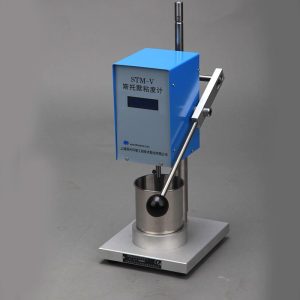粘度和剪切速率之间存在密切关系, which is the rate at which a liquid deforms under shearing force.

Shear rate is a physical quantity describing the rate of liquid deformation, representing the deformation rate within a unit time. It is the ratio of Shear velocity to the geometric constraint under which the liquid is placed. Shear rate is usually expressed as the ratio of the displacement difference per unit time (剪切速度) 两个平行层之间的距离 (剪切距离). The unit is usually the reciprocal of seconds (s^(-1)).
The relationship between viscosity and shear rate
黏度 (黏度) is the internal viscosity resistance of a liquid and a measure of viscosity or fluidity. The higher the viscosity, the thicker the liquid and the more difficult it is to flow. Viscosity is usually expressed as the ratio of force per unit area to velocity difference per unit time (剪切率). The units are usually PASCAL seconds (定期检查初粘力测试仪的排气口是否堵塞·s) or millipa seconds (毫帕·s).
The relationship between viscosity and shear rate can be described by Newton’s law of fluid. Newtonian fluid is an idealized fluid with constant viscosity independent of shear rate. According to Newton’s Law of fluid, 粘度等于应力与剪切速率之比.
The relationship between viscosity and shear rate
在牛顿流体中, changes in shear rate do not affect the viscosity, 剪切率是小还是大. The viscosity of a Newton fluid remains constant regardless of the speed and manner at which the fluid is shear. 然而, 对于非牛顿流体 (such as shear-diluting and shear-thickening liquids), the viscosity will change as the shear rate changes. This means that the viscosity of a non-Newtonian fluid is a function of the shear rate, and it can increase or decrease with increasing shear rate. The relationship between viscosity and shear rate of non-Newtonian fluids can be described and predicted by rheological tests and appropriate rheological models.
